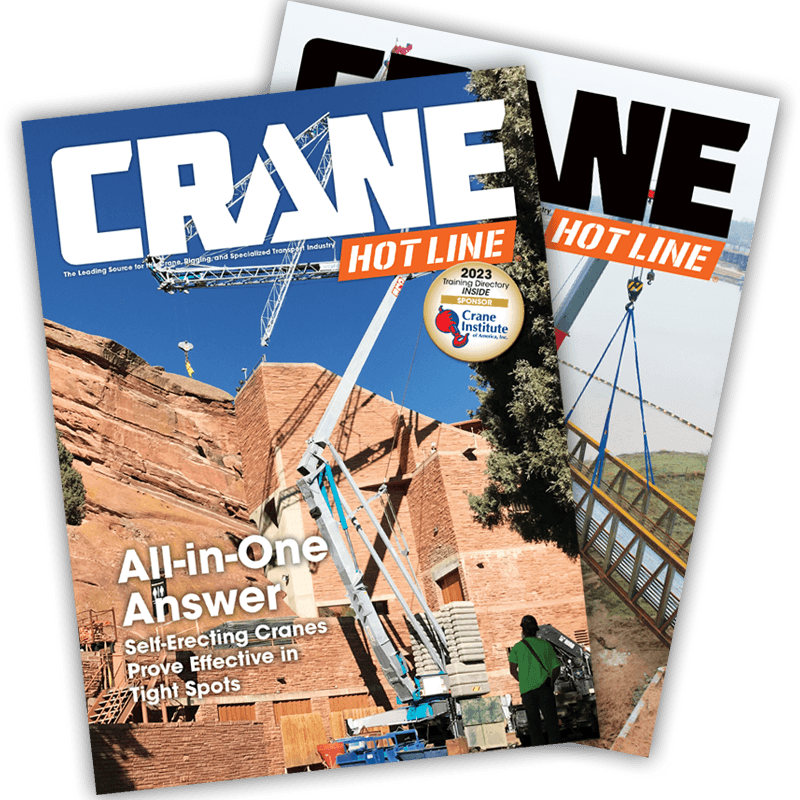Crossing Over
November 5,
2008 –
When Bil-Jax Inc.,

Enlarge Image
While developing the 45XA X-Boom, Bil-Jax leveraged as many
engineering strategies and components from the Summit Series as
possible.
The company also determined that the
quickest, most cost-effective way to build a self-propelled product was to
leverage as many engineering strategies and components from the Summit Series as
possible. Doing so allowed Bil-Jax to build a machine that was light enough –
4,715 pounds – to be towed on a trailer behind a properly sized pickup truck
while at the same time hitting a price point that encouraged and enabled a new
set of buyers to investment in a self-propelled boom.
Variable power
options
Although the concept for a
lightweight, low-cost, four-wheel drive boom lift is in itself unique, the most
unusual aspect of this unit is the way it is powered. Bil-Jax calls its design a
“flexible power system,†which utilizes both DC and internal combustion power
for operation. The flexible power system makes it more of a bi-energy lift than
a hybrid.

Enlarge
Image
I was very pleased with the overall performance of the 45XA.
The generator is standard equipment, and its primary function is to provide 110 VAC power to the platform. Along with the 110-volt wiring to the platform, a 300-psi air line and a 4,000-psi water line are standard.
Defined features
The second introduction in Bil-Jax’s
X-Boom product line, the articulating 45XA, has a 46-foot platform height with a
27-foot maximum horizontal reach. Outriggers have been employed to hold down the
weight of the 45XA to half that of a conventional boom lift.
The outriggers feature
auto-leveling, and with the push of a single button, they level up the chassis
on grades up to 12° degrees in about 30 seconds. Once they have been set, the
boom must be lowered to the fully stowed position to activate the drive circuit.
Once stowed the outriggers only need to be raised ever so slightly to reposition
the machine. For better driving visibility, the system has an interlock that
allows the jib to be raised when the boom is lowered and the outriggers are
fully stowed. Of course, there is some tradeoff for using outriggers: You lose
about 34 inches of horizontal reach in some applications, such as when the
operator is working up against a wall.

Enlarge
Image
The lower and upper controls (shown here) are very
intuitive.
The standard platform is 5 feet wide
and constructed of aluminum. Capacity is 500 pounds with or without the optional
manual 120° platform rotator. The platform is designed to be easily removed to
utilize the optional material-lifting system, capable of lifting 500 pounds. An
optional 180° hydraulic jib rotation system is also available, which is nice for
working around corners or accessing those hard-to-reach places. This option
de-rates the capacity to 440 pounds.
Note in the image above the controls are well defined
and logically positioned around the outline of the machine. Operator interface
is increased with the use of a battery condition indicator, which displays the
charge of the battery when the power is turned on. All boom functions are fully
proportional. As with any self-propelled boom lift, a full safety harness and
proper length lanyard are mandatory.

Enlarge Image
The
worm slewing drive produces 50,000 foot-pounds of torque.
The main superstructure rotation is
700° non-continuous and employs a Kinematics Manufacturing-supplied slewing
drive powered with hourglass worm technology for maximum gear torque and smooth
rotation.
Surprising
performance
Bil-Jax has a small test track
behind its main plant, which is where I had the chance to test the published
48-percent gradeability and determine if it was fact or fiction. The first
hurdle to clear was the large mound that you see in the image above. I can’t
tell you exactly the degree of incline, but it was somewhere in the range of 30
to 35 percent.

Enlarge Image
Traction proved to be surprisingly
impressive.
Topping the ramp’s surface was a
layer of loose gravel and a set of ruts caused by rain erosion, which only added
to the challenge. As we turned to negotiate the mound, I was somewhat skeptical
about the likelihood of our scaling it. To be honest, I was convinced we
wouldn’t but thought it would be interesting to see just how far we could climb.
To my surprise, we not only crested the summit, but the machine performed the
task without any hesitation. Remember, the 45XA is powered by a 21-hp engine,
but the adequate weight-to-horsepower ratio coupled with the front oscillating
axle and wide loader lug tires proved a perfect combination.
Another operation challenge for the 45XA was the muddy terrain. Archbold sits in an area once called the
The day before my visit, it rained heavily – and conditions couldn’t have been more challenging. As we motored around from the backside of the hill, I eyed a very large pool of standing water just to the side of the track. It was quite obviously sitting over a muddy area, and I had no idea how deep it actually was. Not one to ever pass up an opportunity to get a machine stuck in the mud, I veered off course and headed straight to the middle of the quagmire. Once again, my skepticism was unfounded as the X-Boom 45XA pulled through this mush without hesitation. While this unit may be lightweight in many ways, it’s a heavyweight champ when it comes to power and traction. Other options of interest are both turf and non- marking tires.
It is clear that the X-Boom wasn’t designed to compete with a conventional Genie S-40 or JLG 400S boom lift. Bil-Jax is the first to point out these machines are in totally different classes. It is true that the 45XA does go just about anywhere you might need to go and will safely and quickly allow you to work 46 feet in the air.
This lighter-duty machine was designed from the ground up to be easily transported, serviced, and sold at a lower price point, and these attributes make it more inviting for certain buyers to offer a self-propelled boom in their rental fleet or for end users to justify owning a machine. The X-Boom Series has and will continue to introduce self-propelled aerial products to a new set of users.


